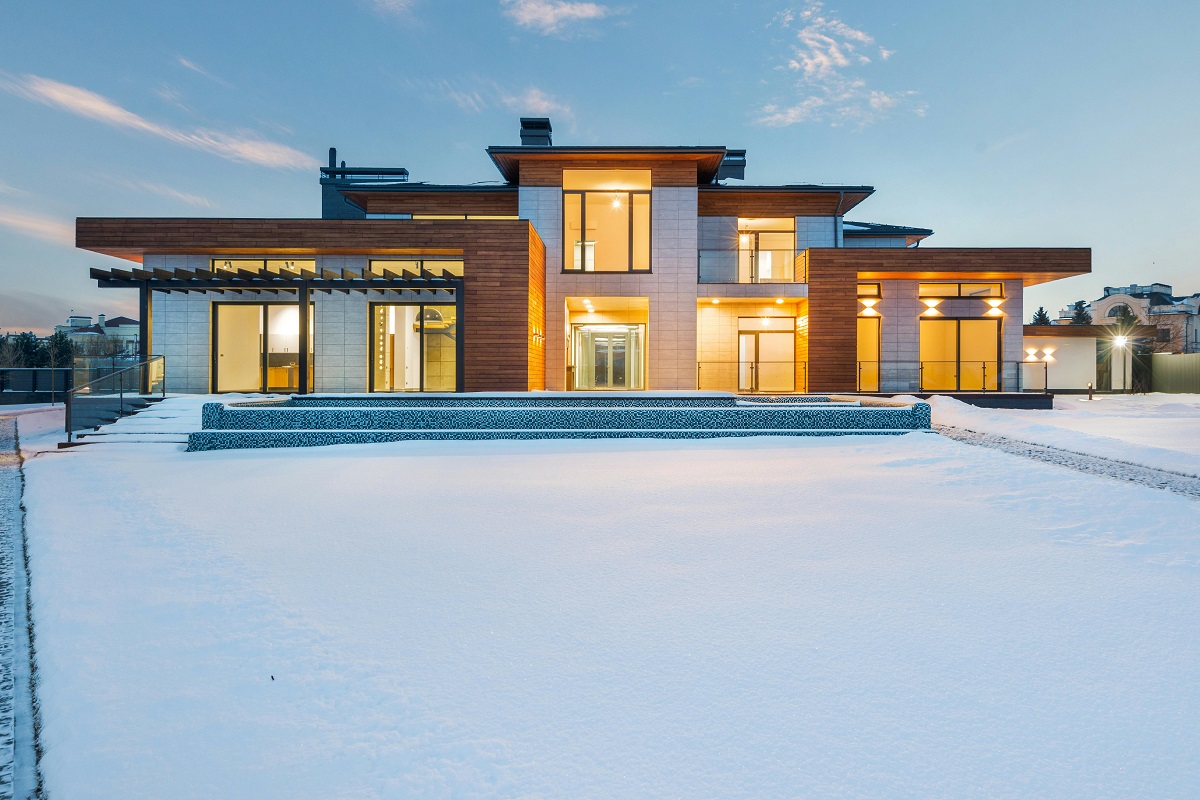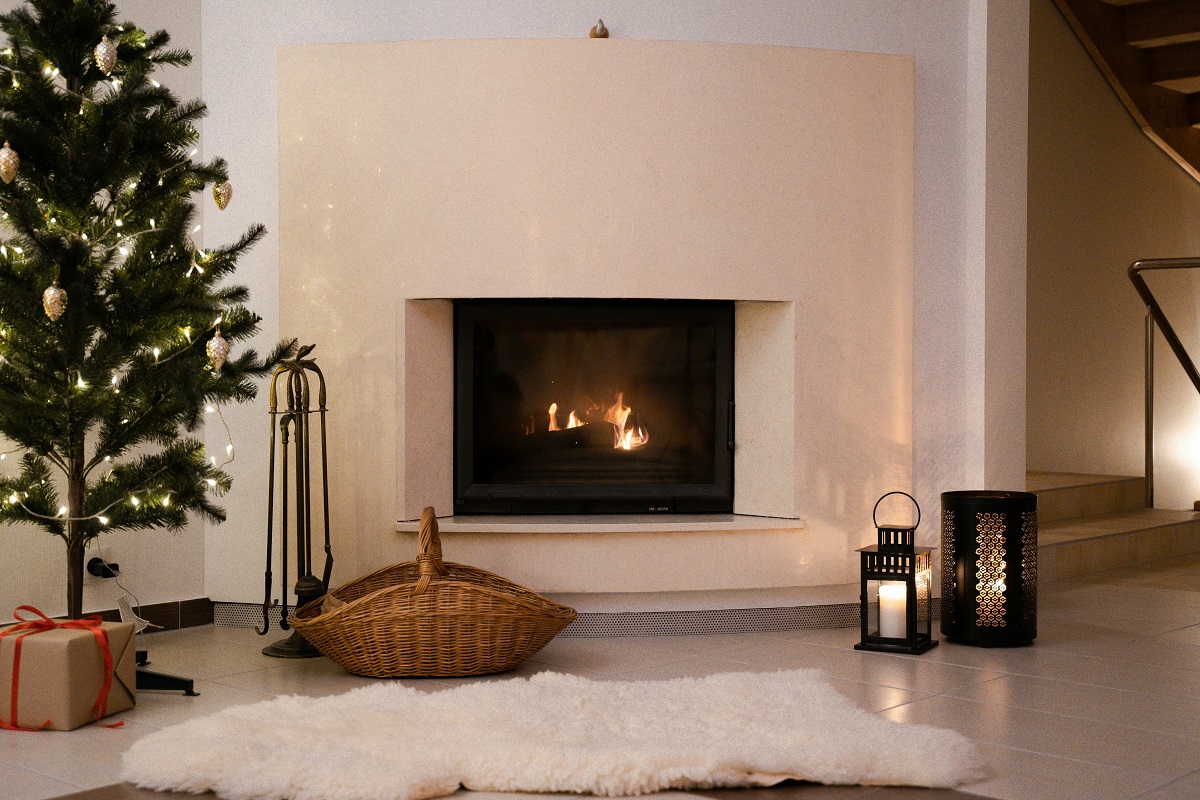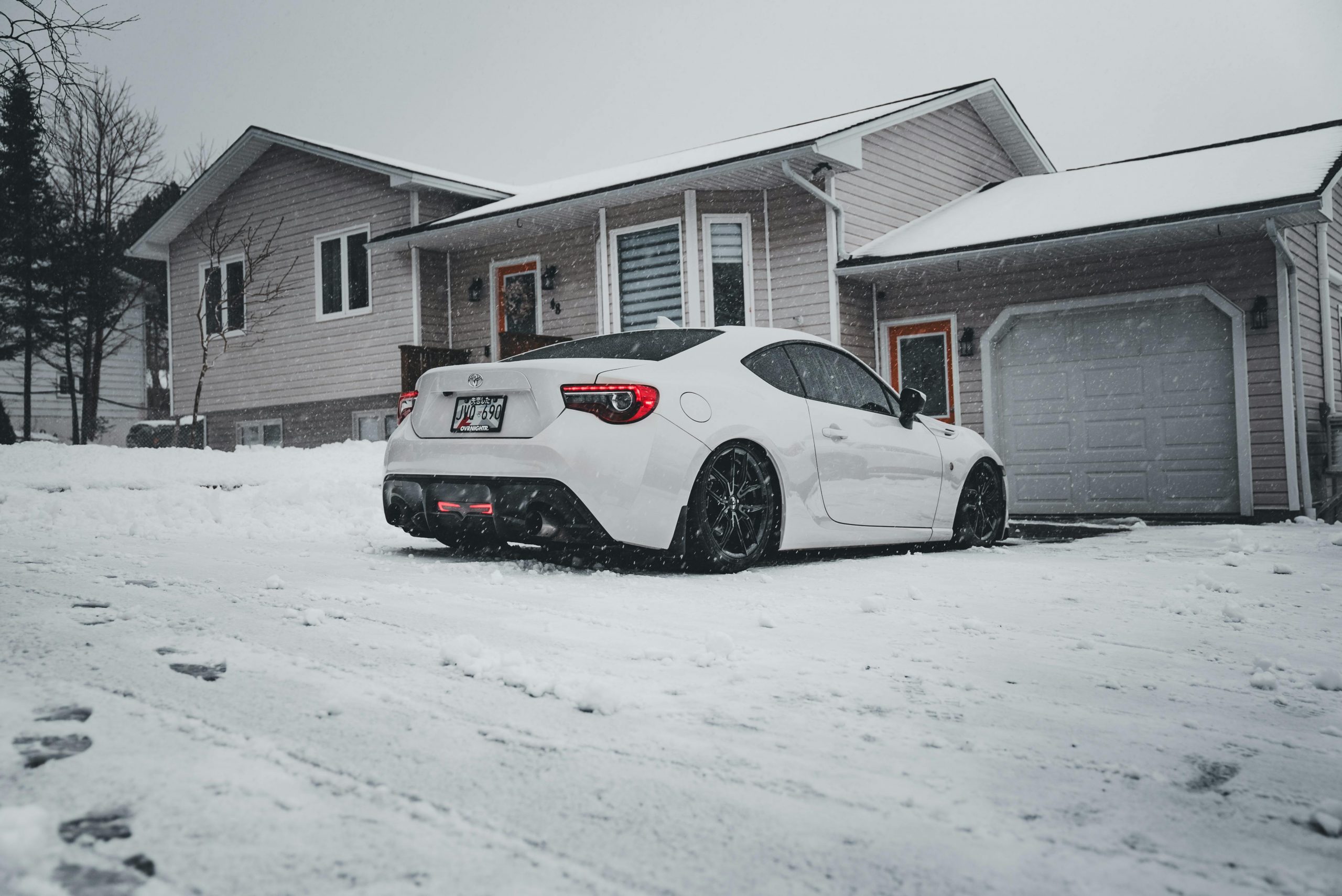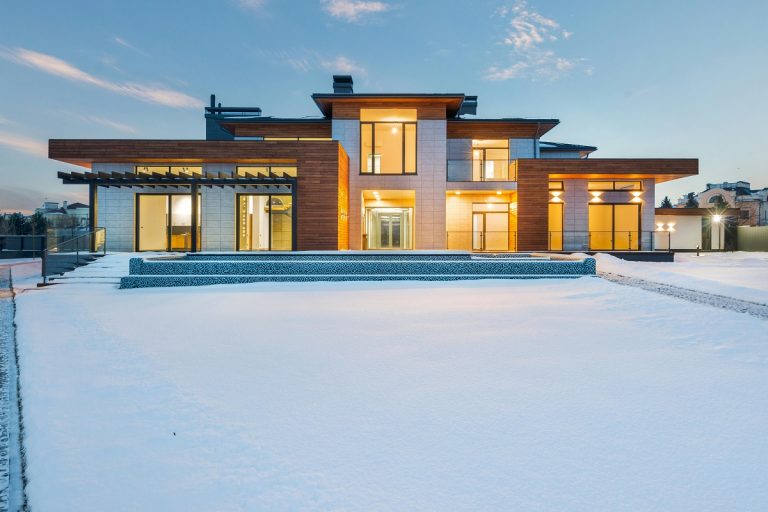

- Start winterizing early to prevent costly damage and reduce stress during cold weather.
- Inspect your home’s exterior, roof, and insulation to minimize heat loss and protect structural integrity.
- Maintain heating systems and ensure proper airflow to keep indoor spaces warm and energy-efficient.
- Prepare plumbing and pipes to prevent freezing and potential water damage.
- Clean and inspect fireplaces, chimneys, and smoke detectors for safe winter use.
- Protect outdoor areas, walkways, and landscaping to avoid hazards and seasonal wear.
- Have an emergency plan and supplies ready for power outages or extreme winter conditions.
Winter can be beautiful, but it’s also a season that puts your home through a lot of stress. From freezing temperatures to icy storms, preparing your home before the cold sets in can save you money, stress, and potential damage. In this guide, we’ll cover every step of winterizing your house—from indoor maintenance to outdoor prep—so you can stay warm, safe, and comfortable all season long.
Why Winterizing Your Home Matters
Many homeowners underestimate the importance of winter preparation. Cold weather doesn’t just make your life uncomfortable—it can cause serious damage to your home. Pipes can freeze and burst, roofing issues can worsen, and heating systems can fail just when you need them most. Winterizing isn’t just about comfort; it’s about preventing avoidable repairs and ensuring your family stays safe.
Preparing early gives you peace of mind and spreads the workload over weeks, instead of leaving everything to do at the last minute when snow is already falling. Additionally, winterizing can help you save on heating bills, prevent energy waste, and even prolong the life of your home’s structural components. By addressing maintenance before temperatures drop, you also minimize the risk of emergencies that are harder to fix in harsh conditions.
How Do I Start Winterizing My Home?
Winterizing a house may seem overwhelming, but breaking it into manageable tasks makes it easy. Start with the basics:
- Inspect your home’s exterior thoroughly: Look for cracks in the foundation, gaps around windows and doors, or areas where siding is damaged. Cold air can seep in through even tiny openings, leading to higher heating bills and discomfort.
- Check insulation: Proper insulation in the attic, walls, basement, and crawl spaces helps maintain consistent indoor temperatures and keeps your heating system from overworking.
- Schedule professional services: Scheduling HVAC maintenance inspections, chimney sweeps, and plumbing checks is worth the investment to prevent costly winter emergencies.
- Make a seasonal task checklist: Prioritize urgent repairs and preventive measures. Breaking tasks into smaller steps, such as “inspect roof” or “seal gaps around windows,” makes winterizing more manageable.
Starting early also gives you time to budget for any necessary repairs or professional services without the rush.
Preparing Your Heating System
Your home’s heating system is your first line of defense against cold weather. Making sure it’s in top shape not only keeps you warm but also reduces energy bills.
- Check the furnace or boiler: Replace filters, test thermostats, and schedule a professional tune-up. Dirty filters or worn parts can reduce efficiency and cause breakdowns during peak usage.
- Inspect ducts and vents: Leaks or blockages in ductwork can lead to uneven heating and wasted energy. Sealing ducts and cleaning vents improves airflow and comfort.
- Upgrade insulation around heating components: Adding extra insulation around exposed pipes or ducts can improve efficiency and reduce energy costs.
- Consider alternative heating sources: Wood stoves, space heaters, or electric fireplaces can provide backup warmth during power outages or supplement your central heating.
Maintaining proper winter heating not only ensures comfort but also prevents potential long-term damage from frozen indoor temperatures.
Fireplace and Chimney Safety
A cozy fireplace is a hallmark of winter, but it can also pose hazards if neglected. A neglected chimney increases the risk of fires and carbon monoxide leaks.
- Clean the fireplace: Remove old ashes and debris to improve airflow and heating efficiency.
- Inspect the chimney for cracks or blockages: Birds, debris, or creosote buildup can obstruct proper ventilation.
- Sweep the chimney: Regularly sweep the chimney to remove soot and creosote buildup. This not only prevents dangerous blockages but also ensures your fireplace burns efficiently.
- Install carbon monoxide detectors nearby: Fires produce carbon monoxide, so detectors are critical for safety.
- Use proper firewood: Avoid treated wood or trash, which can create dangerous fumes or excessive creosote.
- Schedule a professional inspection if needed: Even with regular cleaning, a certified expert can ensure your chimney is fully safe for winter use.
A well-maintained fireplace is not just a source of warmth—it’s a safe, energy-efficient feature when prepared correctly.
How to Prevent Frozen Pipes
Frozen or burst pipes are one of the most common winter emergencies, often resulting in thousands of dollars in damage. Preventing this is easier than dealing with the consequences.
- Insulate exposed pipes: Foam sleeves or heat tape on pipes in unheated areas like basements, attics, and garages help prevent freezing.
- Seal leaks near pipes: Cold air entering through gaps around doors, windows, or walls increases the risk of frozen plumbing.
- Let faucets drip during extreme cold: Slow water flow prevents pressure buildup that can cause pipes to burst.
- Open cabinet doors: Allowing warm air to circulate around plumbing in kitchens and bathrooms reduces the likelihood of frozen pipes.
For homeowners unsure about their plumbing’s winter-readiness, it’s wise to hire professional plumbers to inspect vulnerable areas and recommend insulation solutions.
Sealing Your Home Against the Cold
Cold air can sneak in through the smallest gaps, so sealing your home is crucial in winterization.
- Weatherstrip doors and windows: Replace worn or damaged weatherstripping to prevent drafts.
- Caulk cracks: Focus on areas where siding meets the foundation, around window frames, and at roofline intersections.
- Install storm doors or windows: These extra layers help reduce heat loss significantly.
- Check attic and basement access points: Seal around pull-down stairs, hatches, and basement doors.
A well-sealed home improves comfort, lowers heating costs, and reduces strain on your HVAC system.
Preparing Your Roof and Gutters
Your roof protects your home from snow, ice, and water damage, making pre-winter inspection essential.
- Inspect shingles and flashing: Replace missing or damaged shingles to prevent leaks.
- Clean gutters and downspouts: Remove leaves, debris, and dirt to prevent ice dams.
- Install gutter guards if necessary: They help reduce future buildup and blockage.
- Check attic ventilation: Proper airflow reduces ice dam formation and maintains consistent roof temperature.
- Inspect the roof from the ground: Look for sagging, cracks, or water stains to address problems early.
Preventive maintenance can save you from costly repairs and protect the structural integrity of your home.
How Can I Protect My Driveway and Walkways?
Winter weather can be tough on outdoor surfaces due to snow, ice, and freeze-thaw cycles. Protecting them keeps your home safe and prevents expensive repairs.
- Seal your driveway before temperatures drop to prevent water infiltration and cracking.
- Fill cracks in sidewalks and paths: Ice formation expands gaps and worsens damage.
- Apply non-toxic ice melt: Choose products that won’t harm pets, plants, or concrete surfaces.
- Keep paths clear: Regular shoveling and snow removal prevent slips and falls.
- Check for drainage issues: Water pooling near walkways can freeze and cause uneven surfaces or ice patches.
A little preparation goes a long way in keeping your exterior safe and functional.
Winter Landscaping Tips
Your yard also needs attention before winter arrives. Proper landscaping maintenance reduces hazards and makes spring cleanup easier.
- Trim trees and branches: Remove dead or overhanging limbs that could fall under heavy snow or ice.
- Store garden furniture, hoses, and decorations: Protect them from freezing and weather damage.
- Mulch flower beds: Provides insulation for roots and prevents frost damage.
- Drain irrigation systems: Protect sprinkler lines from freezing and breaking.
- Plan for snow management: Keep tools like shovels, snow blowers, and ice melt accessible.
Proper yard preparation also protects your home’s foundation by minimizing water pooling and ice buildup near the structure.
Preparing for Power Outages
Winter storms can knock out power unexpectedly, making preparedness essential.
- Stock emergency supplies: Flashlights, batteries, blankets, water, non-perishable food, and first-aid kits.
- Invest in a backup generator: Ensure it’s properly maintained, tested, and safely ventilated.
- Know how to safely use alternative heating: Never use outdoor grills or gas stoves indoors.
- Protect sensitive electronics: Use surge protectors or unplug devices during storms.
- Establish a communication plan: Keep a battery-powered radio or mobile devices ready for emergency updates.
Being prepared for outages ensures you maintain warmth and safety, even during extreme winter weather.
Indoor Comfort and Safety
Keeping indoor spaces warm and safe goes beyond just heating systems.
- Check insulation around windows: Add thermal curtains or insulated blinds to prevent heat loss.
- Inspect smoke and carbon monoxide detectors: Replace batteries and test units to ensure proper function.
- Organize emergency kits: Include medications, important documents, flashlights, and first-aid supplies.
- Maintain airflow around vents and radiators: Avoid blocking heat distribution with furniture or drapes.
- Monitor humidity levels: Use a humidifier if air becomes too dry, which can cause discomfort and static electricity.
Comfortable indoor conditions are just as important as safety measures when preparing for winter.
Tips for Living Comfortably During Renovations or Seasonal Prep
Sometimes winterization overlaps with ongoing projects or renovations. Keeping your living space comfortable during this period is critical.
- Set up temporary living zones: Use rooms farthest from construction or renovation areas.
- Keep essentials accessible: Heating, food, and daily items should be within reach.
- Schedule projects smartly: Avoid starting outdoor or plumbing-intensive projects during extreme cold.
- Communicate with contractors: Ensure work is coordinated to minimize disruption and avoid safety hazards.
- Control dust and debris: Use barriers or plastic sheeting to isolate construction areas.
How to Monitor and Maintain Your Winterized Home
Winterizing isn’t a one-time task; it requires ongoing monitoring.
- Regularly check for leaks: Around doors, windows, and the roof.
- Inspect heating systems: Listen for unusual noises or decreased efficiency.
- Maintain safe walkways: Shovel snow and apply ice melt as needed.
- Check emergency supplies weekly: Replace expired items and replenish stock.
- Stay aware of weather reports: Preemptively prepare for storms or extreme cold.
Cost-Effective Winterization Strategies
Winterizing doesn’t have to be expensive. Many strategies are cost-effective and DIY-friendly:
- DIY insulation projects: Weatherstripping, door sweeps, and window insulation kits are affordable ways to reduce heat loss.
- Routine maintenance: Small investments in furnace servicing or plumbing inspections prevent costly repairs.
- Energy-efficient upgrades: Programmable thermostats, LED lighting, insulated curtains, and smart home monitoring reduce energy costs.
- Phased outdoor maintenance: Seal driveways, trim trees, and clean gutters over a few weeks rather than all at once.
Frequently Asked Questions About Winterizing a House
How early should I start winterizing my home?
Early fall is ideal, giving you enough time to address repairs and schedule professional services before the first freeze.
Can I winterize my home myself?
Many tasks, such as weatherstripping, sealing gaps, and minor plumbing prep, are DIY-friendly. For heating systems, chimney maintenance, or complex plumbing, hiring professionals is recommended.
What’s the most important part of winterizing?
Preventing water damage, ensuring heating efficiency, and securing structural components are critical. Frozen pipes, ice dams, and inefficient heating cause most winter-related home issues.
Are there eco-friendly winterization tips?
Yes. Use energy-efficient insulation, LED lighting, programmable thermostats, and non-toxic ice melt to reduce environmental impact while keeping your home warm.
Final Thoughts
Winterizing your house is about preparation, prevention, and comfort. By addressing heating systems, chimney safety, plumbing, insulation, and exterior maintenance, you protect your home from damage and make your living environment cozy and safe.
Start early, tackle tasks methodically, and don’t hesitate to call in professionals for critical jobs. Winter may be inevitable, but with the right preparation, the season can be stress-free and enjoyable in your warm, safe home.






